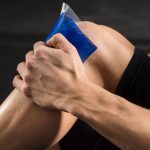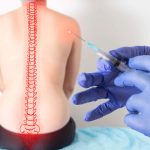After experiencing an injury, many patients have no treatment options except waiting and resting. Those solutions rely on the body’s natural healing process, which involves sending specific cells to repair the injury site.
Regenerative medicine treatments like PRP injections capitalize on the body’s repair response by introducing more healing cells to damaged areas. As a result, these options can speed recovery, allowing patients to resume their regular activities faster.
What Are PRP Injections?
Platelets in the blood serve to prevent and stop bleeding. However, they do more than form clots when they arrive at an injury; platelets also serve as a critical source of growth factors, which regulate the body’s inflammatory response, foster the formation of new tissue and blood vessels, and heal wounds.
Creating platelet-rich plasma (PRP) is a simple process. First, a physician draws a patient’s blood and places the vial into a centrifuge to separate it into platelet-poor plasma, platelet-rich plasma, and red and white blood cells.
Then, the physician injects the PRP into an injury site, boosting healing by introducing a concentrated supply of platelets full of healing growth factors.
What Areas Do PRP Injections Treat?
PRP injections have several uses. For example, they can restore a youthful look to the skin, stimulate hair follicles to grow new hair again, and foster healing in musculoskeletal injuries.
How Long Is Recovery from PRP Injections?
Recovering from the PRP injections is relatively fast. However, patients may experience some initial soreness that steadily improves over time.
The recovery depends on the treatment area. For example, patients who receive injections in the joints to treat arthritis might have some initial swelling that subsides within a week. Over the next few weeks, they should feel their arthritis symptoms improving gradually.
Patients who undergo PRP injections to treat tendinitis or other tendon injuries may experience soreness lasting over a week. Tendons can take up to three to four months to fully realize the effects of PRP treatments, but most patients begin noticing an improvement within four to six weeks.
PRP has a different impact when treating ligaments. For one to two weeks, the injections will promote swelling in the ligaments to temporarily stabilize them. As the swelling subsides, the ligaments’ instability returns before gradually improving.
Like the tendons, ligaments might not receive the full benefits of PRP treatments for three to four months, but patients can expect to feel improvements within four to six weeks.
Many patients seeking an alternative to surgery but hoping to foster faster, complete healing can benefit from PRP injections to naturally restore damaged tissue.
This post was written by a medical professional at Stemedix Inc. At Stemedix we provide access to Regenerative Medicine. Regenerative medicine has the natural potential to help improve symptoms sometimes lost from the progression of many conditions. We also offer Personalized Pain Management In St Petersburg FL.








